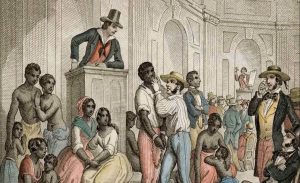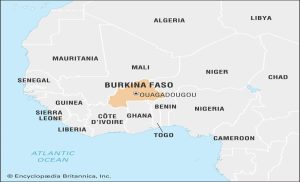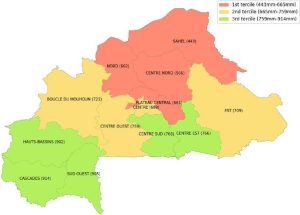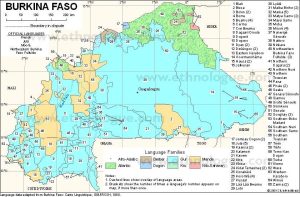The history of Burkina Faso, a landlocked country in West Africa, is rich and complex, shaped by diverse ethnic groups, colonialism, and post-colonial developments. Below is a brief overview of its history:
Pre-Colonial Era
Before European colonization, the area that is now Burkina Faso was home to various powerful kingdoms and empires. The Mossi kingdoms, which emerged around the 11th and 12th centuries, were among the most significant. The Mossi people established several states, such as Ouagadougou, Yatenga, and Tenkodogo, which managed to resist domination by larger West African empires like Mali and Songhai. These kingdoms had well-organized political systems and were known for their cavalry armies.
Other notable groups included the Gurunsi, Lobi, and Senufo peoples, who lived in the southern and western parts of the region, often practicing agriculture and local governance systems.
Colonization by France
In the late 19th century, European powers began colonizing Africa during the so-called “Scramble for
Africa.” France gradually established control over what is now Burkina Faso, integrating the territory into French West Africa by 1896. The area was initially part of Upper Senegal and Niger but was carved out as a separate entity in 1919 under the name Upper Volta.
During the colonial period, the French exploited the region for labor and resources. Many Burkinabé were forced into labor, particularly on plantations in neighboring Côte d’Ivoire, and agriculture in Upper Volta was primarily geared toward cash crops like cotton.
Independence and Early Post-Colonial Period
Burkina Faso gained independence from France on August 5, 1960, and the first president was Maurice Yaméogo. His rule was marked by economic hardship and dissatisfaction, leading to protests. He was overthrown in a military coup in 1966, led by Sangoulé Lamizana, who ruled until 1980.
The 1970s and early 1980s were characterized by a series of coups and unstable governments. The country faced severe droughts and economic crises during this period.
Thomas Sankara and the Revolution (1983-1987)
The most notable era in Burkina Faso’s recent history came with the rise of Thomas Sankara,who came to power in a coup in 1983. Often referred to as the “African Che Guevara,” Sankara implemented a series of radical reforms aimed at economic independence, self-sufficiency, and social justice. He changed the country’s name from Upper Volta to Burkina Faso in 1984, which means “Land of Upright People” in Mossi and Dioula.Sankara’s government focused on improving literacy, health care, women’s rights, and environmental protection. He promoted anti-imperialism and rejected foreign aid, instead pushing for self-reliance. However, his radical policies and authoritarian methods made him enemies both domestically and internationally.
In 1987, Sankara was overthrown and killed in a coup led by his close associate Blaise Compaoré, who then became president.
Blaise Compaoré Era (1987-2014)
Compaoré ruled Burkina Faso for 27 years. His government reversed many of Sankara’s policies, aligning more closely with international financial institutions and adopting a more moderate economic stance. Despite this, his presidency was marred by accusations of authoritarianism, human rights abuses, and electoral manipulation.
In October 2014, mass protests erupted against Compaoré’s attempt to extend his rule by changing the constitution. After days of protests, Compaoré resigned and fled the country, marking the end of his long rule.
Transition and Recent Developments
After Compaoré’s ousting, a transitional government was established, and Burkina Faso held elections in 2015, which were won by Roch Marc Christian Kaboré, a former ally of Compaoré who had distanced himself from the regime.
In recent years, Burkina Faso has faced significant challenges, particularly rising insecurity due to terrorist activities in the Sahel region. Islamist militant groups linked to Al-Qaeda and ISIS have conducted attacks in the northern and eastern parts of the country, leading to internal displacement and a humanitarian crisis.
Modern Day
Burkina Faso continues to grapple with security concerns, economic development, and political transitions. Kaboré was re-elected in 2020, but his government has struggled to contain the insurgency, leading to dissatisfaction. In January 2022, Kaboré was ousted in a military coup, reflecting ongoing political instability. In September 2022, another coup occurred, bringing Captain Ibrahim Traoré to power as the country’s transitional leader.
Burkina Faso’s history reflects a legacy of resilience, from the powerful Mossi kingdoms to modern-day challenges of governance and development.

Location
Burkina Faso, landlocked country in western Africa. The country occupies an extensive plateau, and its geography is characterized by a savanna that is grassy in the north and gradually gives way to sparse forests in the south. A former French colony, it gained independence as Upper Volta in 1960.

Climate
The climate of Burkina Faso is generally sunny, hot, and dry. Two principal climate zones can be distinguished. The Sahelian zone in the north is semiarid steppe, characterized by three to five months of rainfall, which is often erratic. To the south, in the Sudanic zone, the climate becomes increasingly of the tropical wet-dry type, with a greater variability of temperature and rainfall and greater total rainfall than the north.
Four seasons may be distinguished in Burkina Faso: a dry and cool season from mid-November to midFebruary, with temperatures dropping to about 60 °F (16 °C) at night; a hot season from mid-February to June, when maximum temperatures rise into the low 100s F (about 40 °C) in the shade and the harmattan—a hot, dry, dust-laden wind blowing off the Sahara desert—is prevalent; a rainy season, which lasts from June to September; and an intermediate season, which lasts from September until midNovember. Annual rainfall varies from about 40 inches (1,000 mm) in the south to less than 10 inches (250 mm) in the north.

Languages
In the multilingual nation of Burkina Faso, an estimated 70 languages are spoken throughout the country. 66 of these languages are indigenous languages. French is Burkina Faso’s official language. Mossi is the most widely spoken language of Burkina Faso, as it is spoken by nearly 40% of the country’s population. Most people living in the country’s urban areas are multilingual, while the rural population uses their native languages for common activities.
The Official Language of Burkina Faso
French is Burkina Faso’s official language. The language was introduced in the country in 1919 during French colonial rule in the country. The language is the primary medium of instruction in the country’s schools. It is also the dominant language used in the country’s judicial, administrative, and political institutions, as well as the press. Despite the wide use of French for official purposes in Burkina Faso, only 15% of the nation’s population speak French on a daily basis. However, since education in French assures social mobility and economic support for education for the country’s students, there is constant support towards the use of French as a medium of instruction in Burkina Faso’s schools. Indigenous and Minority Languages of Burkina Faso
Mossi
The Mossi language is spoken by about 5 million Mossi people in Burkina Faso. It is one of Burkina Faso’s two official regional languages. Mossi is a Gur language, a member of the Oti–Volta branch of languages. It is the country’s most widely spoken language. As of 2008, nearly 48% of the population of Burkina Faso spoke the Mossi language. The language is spoken mainly in the central region of Burkina Faso, especially around the capital of Ouagadougou.
Fulfulde/Fula
The Fulfulde language is a member of the Senegambian branch of the Niger-Congo language family. The language serves as a lingua franca in many areas of Burkina Faso. The language is spoken by about 8.36% of the country’s population. First language speakers of Fulfulde reside primarily in the east and north of Burkina Faso. Dyula
The Mande language of Dyula is spoken in countries such as Burkina Faso, Mali, and the Ivory Coast. Millions of people speak this language, which is an important trade language and is mutually intelligible with Bambara. The language uses Latin, Arabic, and the indigenous N’Ko script for writing. As of 2006, 4.4% of the population of Burkina Faso speak Dyula. It acts as a lingua franca in the country, and is mainly spoken in the western parts of Burkina Faso.
Gourmanché
Around 5.51% of the population of Burkina Faso speak the Gourmanché language. It is spoken as a first language by the Gurma people living mainly in the eastern parts of the country. Other Languages Spoken in Burkina Faso
Bissa
The Mande language of Bissa is spoken by about 2.85% of the population of Burkina Faso. It is spoken as a first language by the Bissa people. Barka, Lebir, and Lere are the three dialects of the language.
Dagare
The language is spoken by the Dagaaba people in Burkina Faso and Ghana. It is spoken by about 1.76% of the country’s population.
Bwa
The Gur language of Bwa is spoken by the Bwa people of Burkina Faso, who constitute about 1.91% of the country’s population.
Bobo
The Mande language of Bobo is spoken in Burkina Faso by the Bobo people. Bobo Dioulasso, a city in western Burkina Faso, is named after the Bobo people.
Samo
Around 1.66% of the population of Burkina Faso speak the Mande language of Samo.

